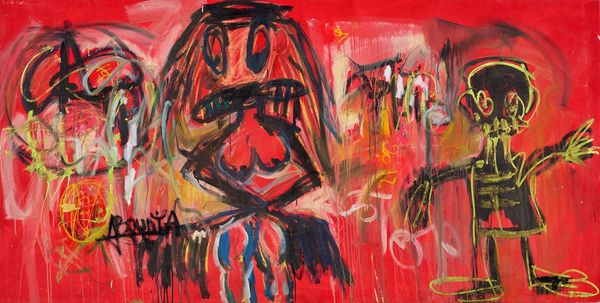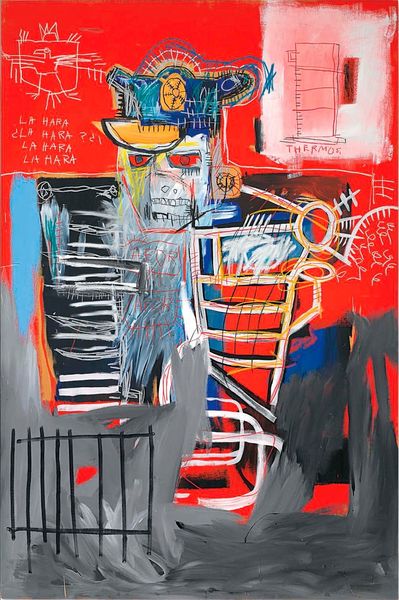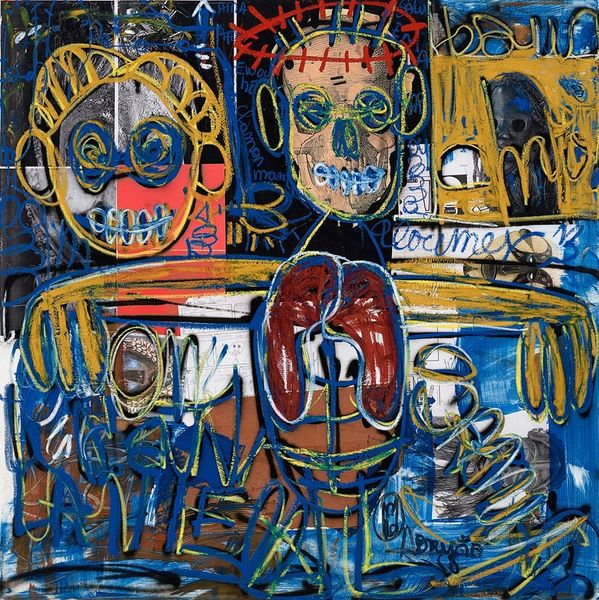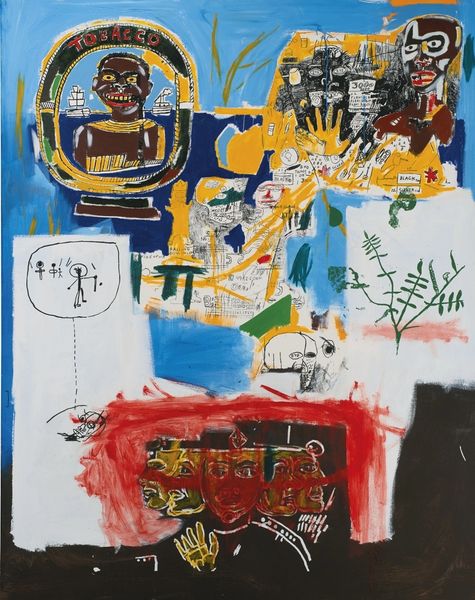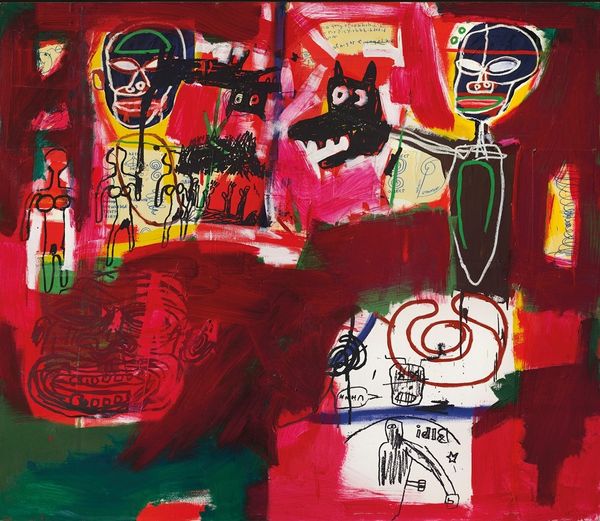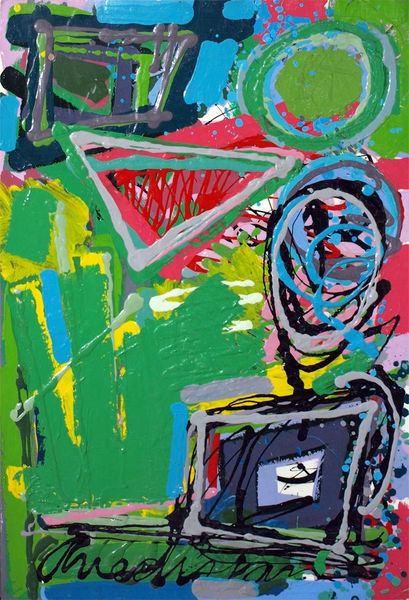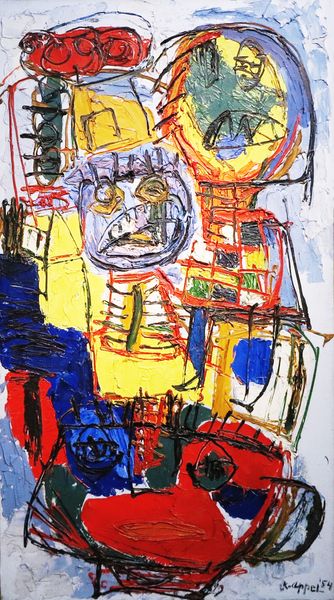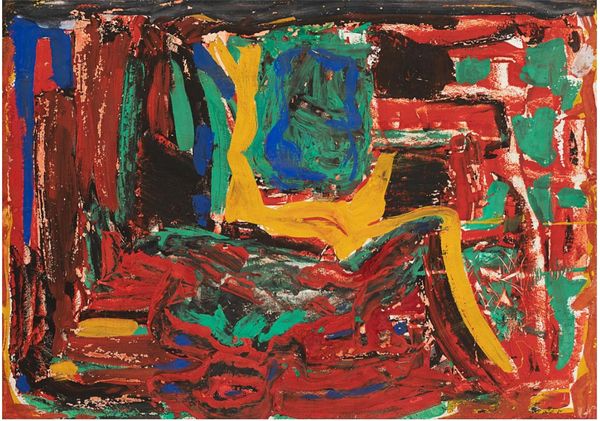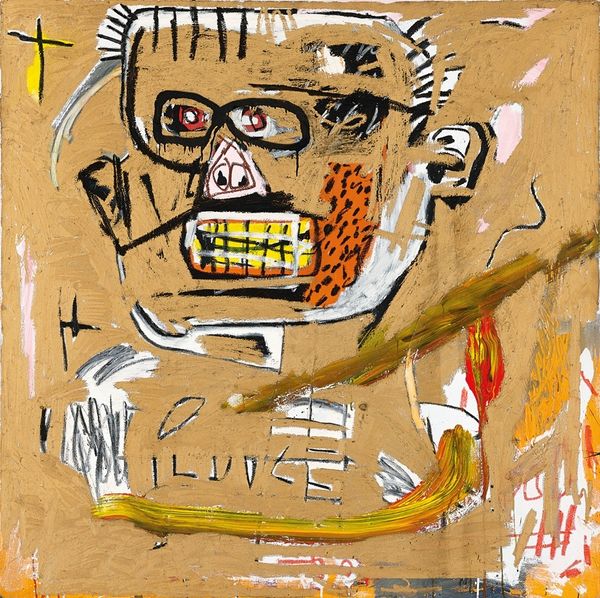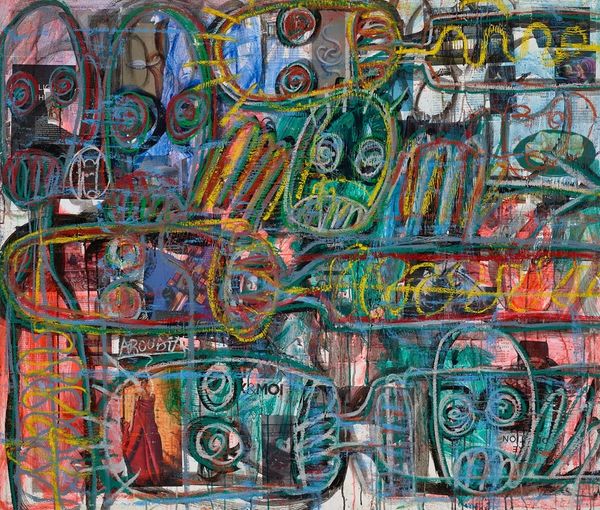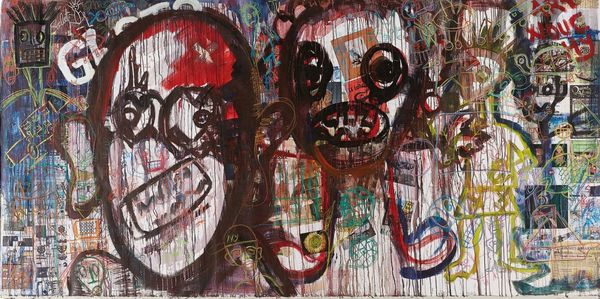
Copyright: Modern Artists: Artvee
Curator: The mixed media piece before us is Jean-Michel Basquiat’s “In This Case,” created in 1983. Acrylic and what looks like oil stick on canvas. It's really quite monumental. Editor: Immediately, the overwhelming color strikes me—the vibrant red feels almost violent. And those teeth, outlined in green… It’s quite unsettling. Curator: Consider the layering. Basquiat frequently built his compositions this way. The frenetic energy comes from a constant building up and scraping away. You see the raw canvas poking through. Note also his use of language within the piece; observe the lone crown hovering above the subject as well. Editor: Yes, but who *is* this subject? The raw materiality echoes the rawness of the figure depicted—or rather, evoked. Basquiat is wrestling here with complex themes of Black identity and trauma. The fractured anatomy, the exposed teeth, all speak to a deeper cultural anxiety, perhaps even referencing historical representations of Black bodies. Curator: Precisely. Think about Basquiat’s place in the art world at the time, his rapid ascent, his commercial success within a predominantly white space, and how this impacted his creative process. There's a tension between raw, authentic expression and the pressures of production. He used readily available materials. And this piece uses those raw materials in that raw expression that feels honest and real. Editor: Absolutely. And the crown symbol becomes crucial. Here, it acts almost sardonically, highlighting issues of power, appropriation, and perhaps even the artist's own complex relationship with fame. Curator: The art market often celebrates the 'genius' artist. It’s essential we acknowledge the labour involved – the application, the mark-making, the very physical act of creation. Editor: This artwork demands more than passive observation. It's a visceral scream. This is Basquiat holding a mirror to society and asking uncomfortable questions. Curator: It's a testament to the power of materials in conveying complex narratives. Editor: Yes, this isn't merely art for art's sake, but art as a form of cultural critique. Powerful stuff.
Comments
No comments
Be the first to comment and join the conversation on the ultimate creative platform.
